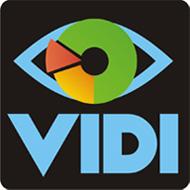 Support for Drupal 7 is ending on 5 January 2025—it’s time to migrate to Drupal 10! Learn about the many benefits of Drupal 10 and find migration tools in our resource center.
Support for Drupal 7 is ending on 5 January 2025—it’s time to migrate to Drupal 10! Learn about the many benefits of Drupal 10 and find migration tools in our resource center.This project is not covered by Drupal’s security advisory policy.
Tagmap is a Views style plugin. We made a text marker API which we use to display a geo-coded tag cloud over Google Map.
There are two possibilities: to display taxonomy terms, or display previously imported external data.
The module provides admin settings page for some basic options. Some of them can be overridden with views style plugin options.
As additional possibility user can use cluster-marker to refine the display.
To be able to use this option you have to put file markerclusterer_packed.js (from http://gmaps-utility-library.googlecode.com/svn/trunk/markerclusterer/1....
) in the js directory.
You can also use the Clusterer to group several close markers together. This library hasa nice feature to list previously defined number of markers in every given cluster.Just go to
http://www.acme.com/javascript/Clusterer2.jsm (for packed version, rename it to Clusterer2.js) or
http://www.acme.com/javascript/Clusterer2.js (for human-friendly version)
and save the Clusterer2.js file in the js directory.
This module's main purpose is to visually present location related data where exact geographical borders are not available or where underlying geographical data need to be preserved. The module can accept numerical data either from an external source or from counting nodes (through taxonomy).
DRUPAL 7 notes:
This version uses V3 version of the Google Maps API. Clusterer2 is not yet supported in Drupal 7 version. MarkerClusterer is supported, the file that is needed is markerclusterer_compiled.js and it can be downloaded from here.
This module is part of a package of modules being developed by Jefferson Institute. These modules are meant to serve as tools for data visualization:
- VIDI - Vidi module serves as a guide to choose adequate visualizations from Timeline, Tagmap and GVS modules for specific data, i.e. wizard with visualizations preview.
- Timelinemap - It allows you to load one or more data sets onto both a map and a timeline simultaneously. Only items in the visible range of the timeline are displayed on the map. Timeline Map displays data represented in the timeline as markers on Google map.
- KML content type - Users can attach .kml files to a node (with upload module), which in turn is displayed through the Google Earth API. If a user attaches several .kml files it is possible to choose between them via a drop-down box.
- Google Visualization API - It uses Google Visualization API to display different types of charts. Pie, Bar, Column, Gauge, GeoMap, IntensityMap, Area, MotionChart and Scatter plot are supported at the moment.
- Importer - Imports data in the database, handles batch upload of .zip files and connection of those files to the appropriate data in the created table.
Project information
- Module categories: Content Display, Site Structure
2 sites report using this module
- Created by kartelusm on , updated
This project is not covered by the security advisory policy.
Use at your own risk! It may have publicly disclosed vulnerabilities.











